| Umělec 2006/1 >> Commemoration of Mid-Life | Просмотр всех номеров | ||||||||||||
|
|||||||||||||
Commemoration of Mid-LifeUmělec 2006/101.01.2006 Radek Wohlmuth | review | en cs |
|||||||||||||
|
Veronika Holcová – Territory, Eugenio Percossi as a guest – B/W
October 19 – December 3, 2005, Jiří Švestka Gallery, Prague It is clear right away from exhibition of Veronika Holcová (1973), Territory, the artist has evolved significantly from her previous solo exhibition, four years ago. Dominated by the depiction of a figure in space, these new canvases have penetrated into a particular visual terrain. The environment, which can be read as a landscape, is poetically dreamy and formally close to lyric abstraction, while the figure is realistic. The layered space — for which some pictures were fully devoted, and embellishes in the rest — is malleable, overgrown, and intermingled in colored strips and awash with dispersed abstract light. The figures, are constant, by a contrast enhanced by the divergent techniques applied. Acrylic paint is diluted and plied with a paint roller to achieve a presence approaching watercolor; the figures are modeled with oil paints and brush. The protagonist of the series is a young woman. Whereas additional figures fill the space out, forming integral features for the “landscape,” the female figure isn’t uniformely integral to the space. Indeed, only on occasion does she cast any shadow. Seemingly in substitution, she has a black dog whose movements carry such an array of emotion, they stand out perfectly. The motif of a dog has many conflicting meanings, but in the first place it is a creature at the threshold—existing at the crossroads of two worlds. We can understand it in the same way here. For the woman, the surrounding environment is not important; it enables a relationship towards her through appearance. We find this in the exhibition’s name: the word itself, territory, already evokes a personal, posessive relationship. Whether the interior or exterior, it is someone’s world. If this intangible space is unique, the woman is anonymous – prosaic, neutral, present. She eludes normality only via the absurd connection of active movement of the whole body, and closed eyes. To shut ones eyes is to establish a barrier, you isolate yourself from the surroundings. Real eyesight substitutes for inner vision, the outer world is substituted by a land of fantasy, memory, aspiration and imagination. Who sleeps, dreams. That which transpires in the paintings of Veronika Holcová might that which is veiled by the paradox distinguishing real dream and dreamy reality, a paraphrase of sorts of the Taoist tale of Chuang-Tzu dreaming he was a butterfly. Seen otherwise, illustrated is a state of awakening prior to waking up, when you can feel the weight of your body but your mind is still outside this world. The manner of perception is particularly intriguing. The woman is mostly immersed into herself. Like her bizarre surroundings, she is visible for anyone. The visitor can see her from the outside, and probably also from within. The installation even offers a foyer into this space, “scenes from the subconscious” where the spectator becomes a mental voyeur. The depicted space is certainly not real and the vistior has no share of it. So who does the territory belong to then? Most likely the main heroine. Such a duality essentially indicates an alignment with the subject of inner and outer world, or simply the categories of objective and subjective. But we can go further. Surely it’s no coincidence that the artist and heroine are about the same age, around thirty. An age of balancing, a breaking point in many ways, it would behoove us to understand Holcová’s new work as autobiographic, or at least very personal. The relation of heroine and space doesn’t vary. Perhaps it’s a realm she came to by chance, it might belong to someone who planted her into his world. It would not be out of place to wonder what the woman does with her time. Is she approaching us, passing by, or running away? We can of course consider also whether to shut our eyes before something, or approach something blind. There are sufficient associations in this respect that anyone can imagine. For general background and contextual basis, Freud’s “Interpretation of Dreams” would serve well, along with Surrealism and the Romanticism of Caspar David Friedrich. There is nothing new about juxtaposing natural abstracted aspects with “real” figures; indeed, this has been part of the Czech visual environment for decades. This is typical with children’s illustrated and animated works. There is Jiří Trnka and Zdenek Smetana stories like Křemílek and Vochomůrka (1968). And just a year ago, the fairy tale Oskar and Mimy, by Anna Neborová, a contemporary of Holcová, was published. There the changeably colorful sky is an active player, and just like in the pictures of Holcová, it is clear that it isn’t background only; the protagonist of the series has stabilized in a strange hybrid position. It is clearly real, but it didn’t originate from a model, It doesn’t have the parameters of a portrait, but it is obvious that it’s one and the same. More than a real indvidiuality it presents a type, like a literary or comic book hero. Such a position is unusual, lively enough to create a feeling of individuality while remaining universal at the same time, so it is theoretically possible to identify with her and project oneself into her. The overall expression brings the pictures somewhere close to border of illustration – a tool regarded in in artistic circles as problematic. Yet there is only the implication of the presence of a story. The principle itself is not new, but the transformation into art might be, and this could be the most interesting thing that this series offers. This position brings with itself some problems, particularly when in the bizarre space of the inner world aesthetics dominate expression, and the principle itself is merely mechanical. The contrast of abstraction and realism—the diluted acrylic and oil— is based mainly on the clarity of the media. Repainted contours, imperfect retouching and occasional overpainted figures, visible for anyone, don’t improve anything. It is clear that this cycle is very important for Veronika Holcová – for many reasons. It is expressive, it manages to affect and address us, and those who unreservedly accept its pictoresque concept will have the full impact. But the extent to which these transgress the shadow of a period of generation production, will be clear much later. The installation of the Italian sculptor Eugenio Percossi (1974) is basically the same, but in a different language. Holcová invited him as a guest. His project Black/ White – two black and white rooms with stylish furniture – are nothing new. At least it goes back to the black and white Vienna studio of Egon Schiele (1909), which was in this respect the second – preceded by Aubrey Beardsley – but it is interesting as an un/conscious remake. It is significant that it is no academic realization, but a space where Percossi actually lives, in the summer, and it brought to perfection with the inclusion of a caged bird. The idea approximates a non-violent gesture, strongly associative, and naturally containing an aesthetic message. For that matter, the opportunity to “enter” an old photograph is never unintersting. Both works are similar in something and they communicate naturaly together. Altough Percossi’s installation is more taciturn, it doesn’t say any less. r
01.01.2006
Рекомендуемые статьи
|
|||||||||||||
|
04.02.2020 10:17
Letošní 50. ročník Art Basel přilákal celkem 93 000 návštěvníků a sběratelů z 80 zemí světa. 290 prémiových galerií představilo umělecká díla od počátku 20. století až po současnost. Hlavní sektor přehlídky, tradičně v prvním patře výstavního prostoru, představil 232 předních galerií z celého světa nabízející umění nejvyšší kvality. Veletrh ukázal vzestupný trend prodeje prostřednictvím galerií jak soukromým sbírkám, tak i institucím. Kromě hlavního veletrhu stály za návštěvu i ty přidružené: Volta, Liste a Photo Basel, k tomu doprovodné programy a výstavy v místních institucích, které kvalitou daleko přesahují hranice města tj. Kunsthalle Basel, Kunstmuseum, Tinguely muzeum nebo Fondation Beyeler.
|






















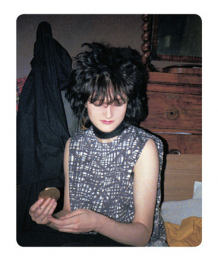




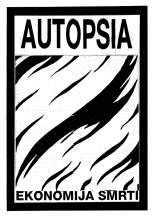
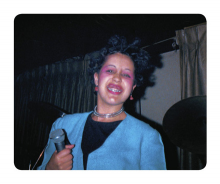
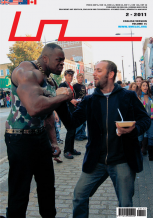
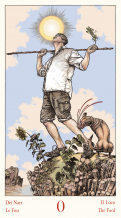


 We Are Rising National Gallery For You! Go to Kyjov by Krásná Lípa no.37.
We Are Rising National Gallery For You! Go to Kyjov by Krásná Lípa no.37.
Комментарии
Статья не была прокомментированаДобавить новый комментарий